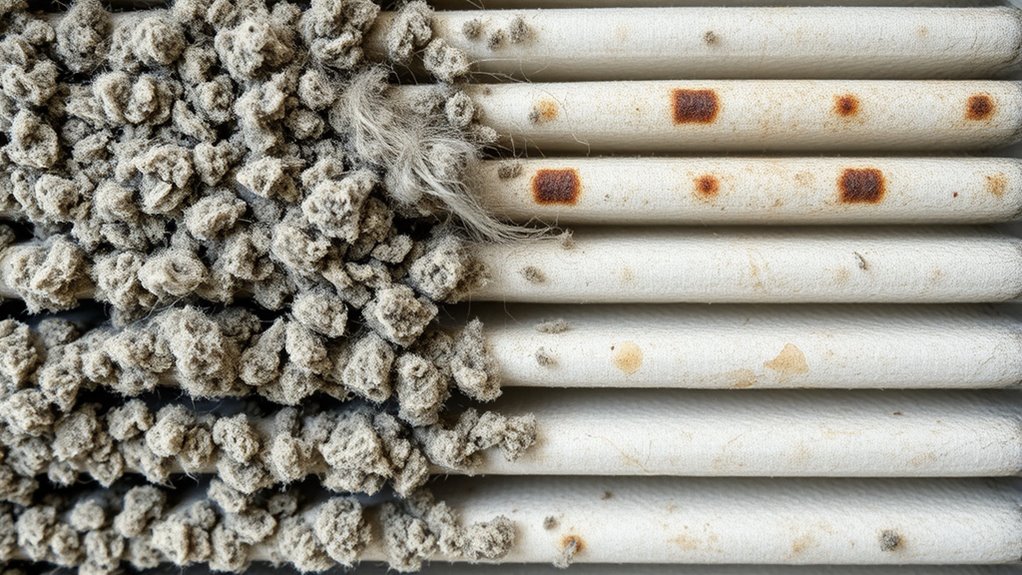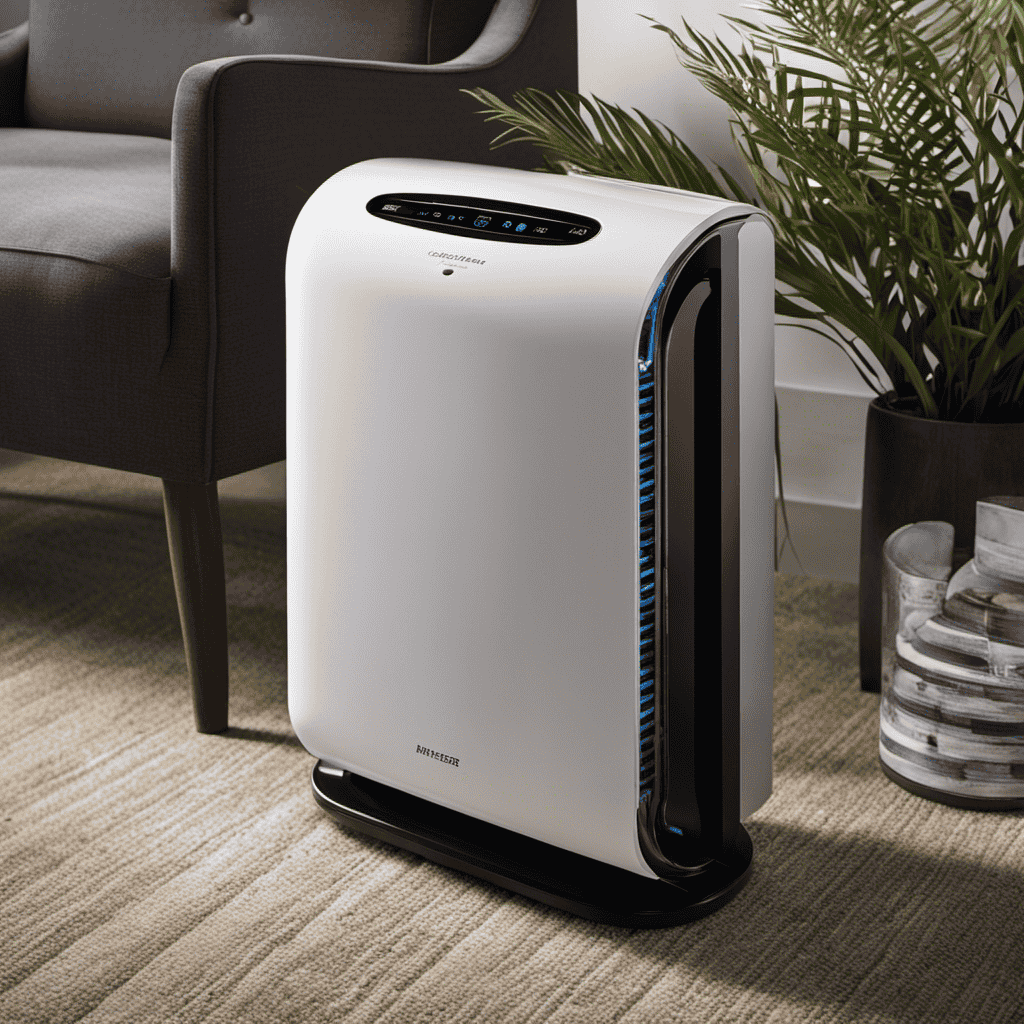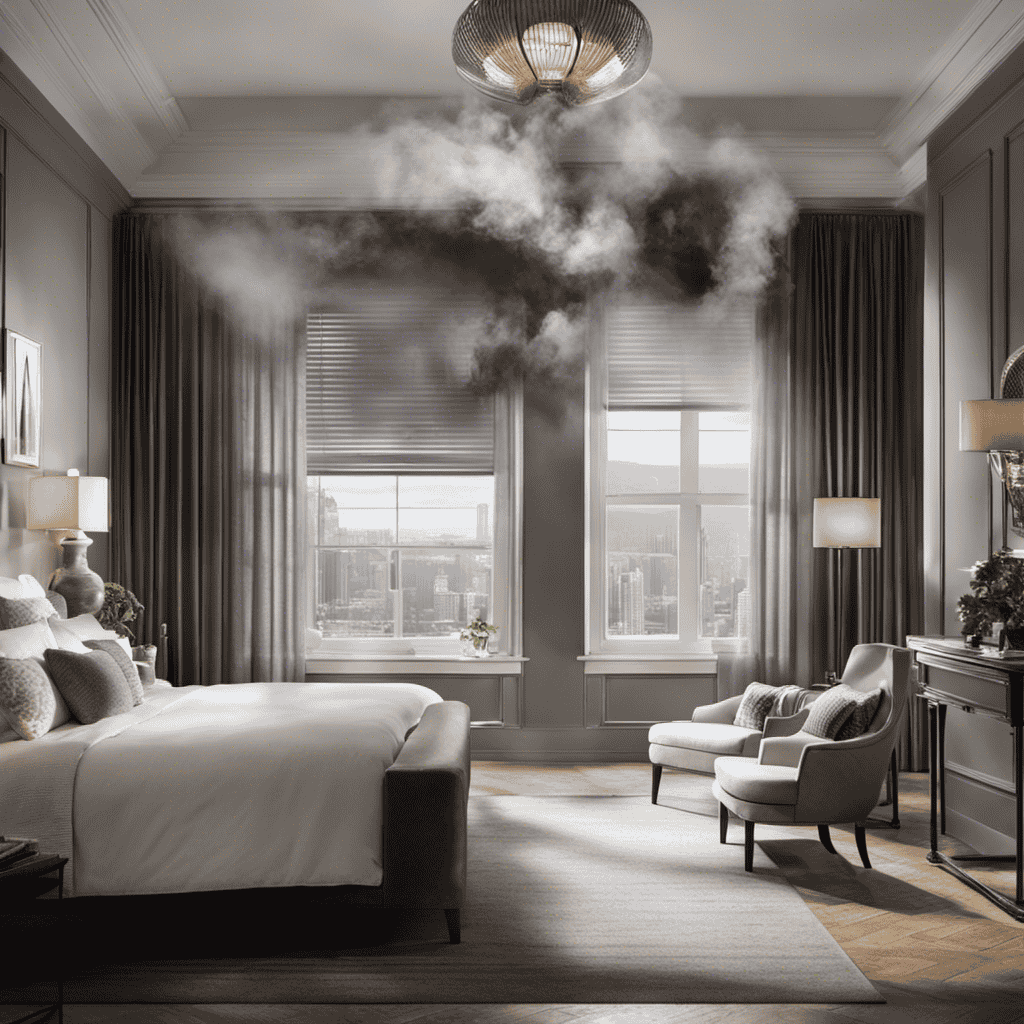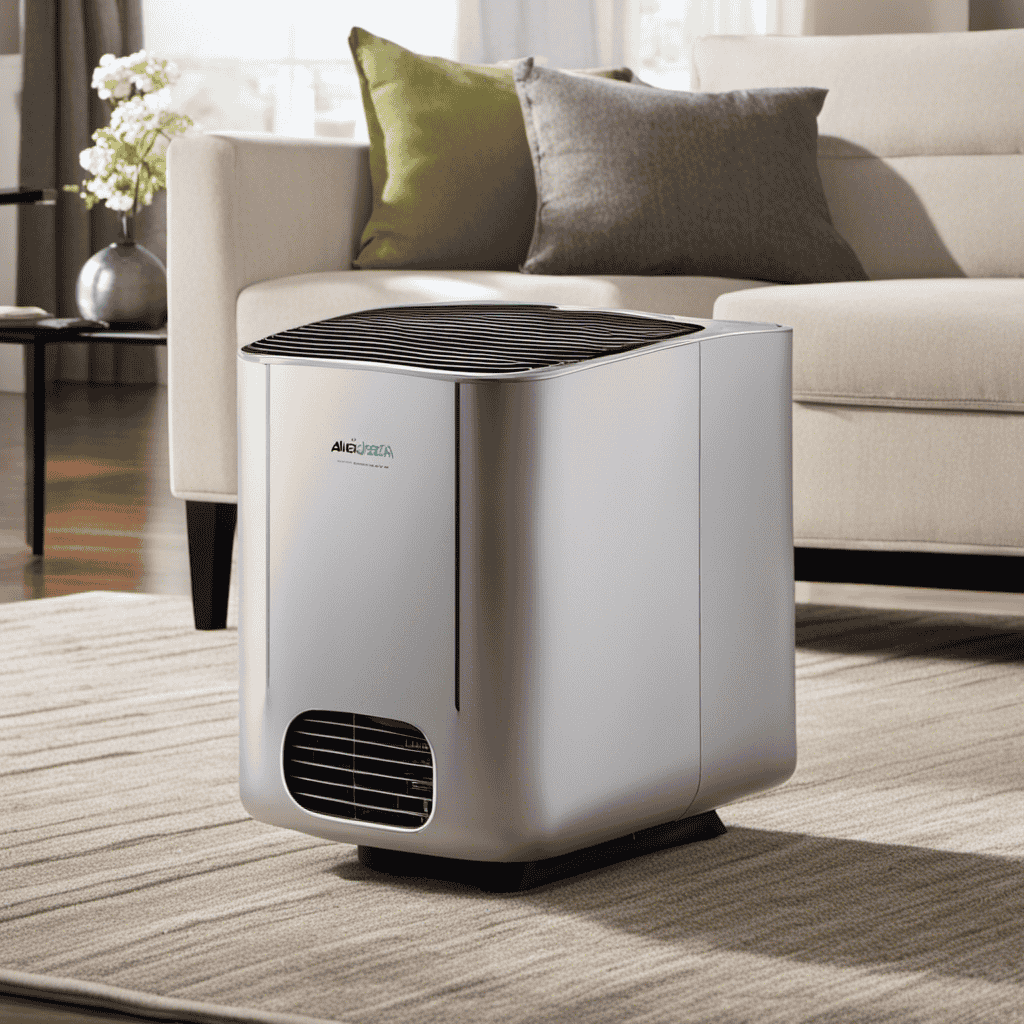If your air purifier has weak airflow or makes louder noises, it’s a sign the filter is clogged or worn out. Persistent odors even after replacing the filter point to it reaching the end of its lifespan. You might also notice more dust or allergens settling in your space, or see dirt and debris on the filter itself. If your device sounds unusual or malfunctions, a new filter could be the fix. Keep going to learn more about keeping your air fresh.
Key Takeaways
- Reduced airflow or louder operation indicates the filter may be clogged or at the end of its lifespan.
- Persistent odors despite filter changes suggest the filter has become ineffective or needs replacement.
- Increased dust or allergens in your space signals that the filter is no longer trapping particles effectively.
- Visible dirt, discoloration, or sagging on the filter shows it is saturated and needs replacing.
- Unusual noises or device malfunctions often point to debris or strain caused by a clogged or worn filter.
Reduced Airflow or Weak Fan Performance

If your air purifier’s airflow seems weaker than usual or the fan isn’t performing as loudly or effectively, it’s often a sign that the filter needs replacing. Over time, the filter’s lifespan diminishes as it traps dust, debris, and pollutants, causing airflow decline. When the filter gets clogged, air struggles to pass through, reducing overall performance. You might notice the fan running longer or louder to compensate, but it won’t restore proper airflow. Regularly checking your filter’s condition helps prevent this decline. If airflow drops noticeably, it’s a clear indicator that the filter has reached its limit and needs replacing. Keeping up with filter maintenance ensures your purifier functions efficiently, providing cleaner air without overworking the fan. Incorporating air quality management like regular filter checks can also help maintain optimal airflow and reduce the buildup of pollutants. Additionally, filter replacement indicators can alert you when it’s time for a new filter, preventing performance issues before they become noticeable. Staying aware of filter lifespan can further help in planning timely replacements and maintaining optimal device performance.
Persistent Odors Despite Filter Replacement
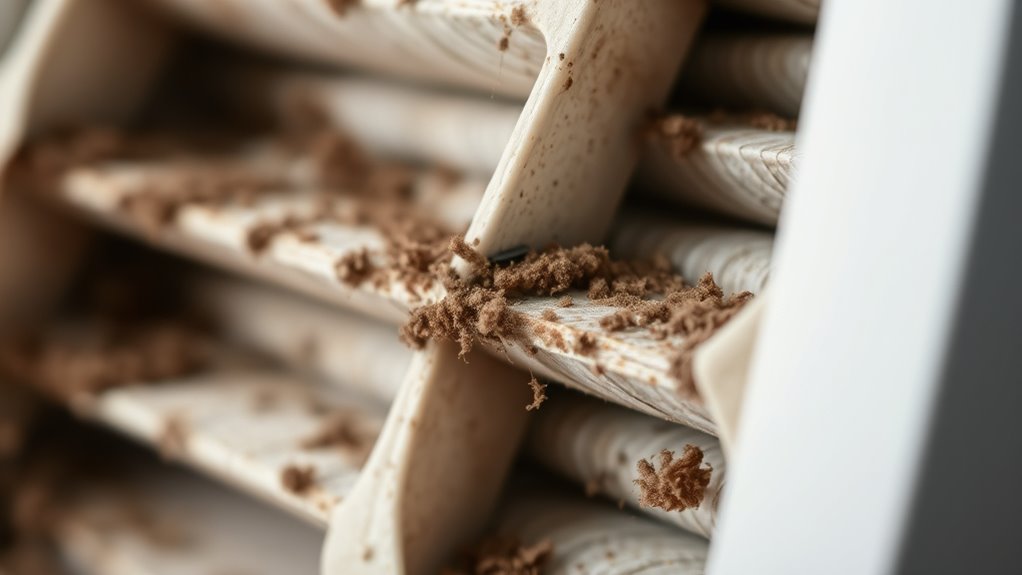
Even after replacing your air purifier’s filter, persistent odors can linger, indicating that the problem extends beyond a simple filter issue. If your filter has reached the end of its lifespan, it may no longer effectively eliminate odors, even if you recently swapped it out. Additionally, some odors, like smoke or pet smells, are stubborn and require more frequent filter changes or specialized filters for proper odor elimination. Regularly checking your filter’s lifespan helps ensure it’s still capable of tackling odors. Proper maintenance and adherence to filter replacement schedules are essential for effective odor control. If odors persist despite a new filter, it might also suggest sources of odor that aren’t airborne or that the purifier isn’t powerful enough for your space. Incorporating AI-powered insights can help identify potential sources of persistent odors and optimize air purification strategies. Understanding the filter lifespan and proper maintenance schedules can significantly improve odor control. Addressing these factors will help you achieve better odor control and cleaner air. To improve odor removal, consider using activated charcoal filters designed specifically for odor adsorption.
Increased Dust and Allergens in Your Space
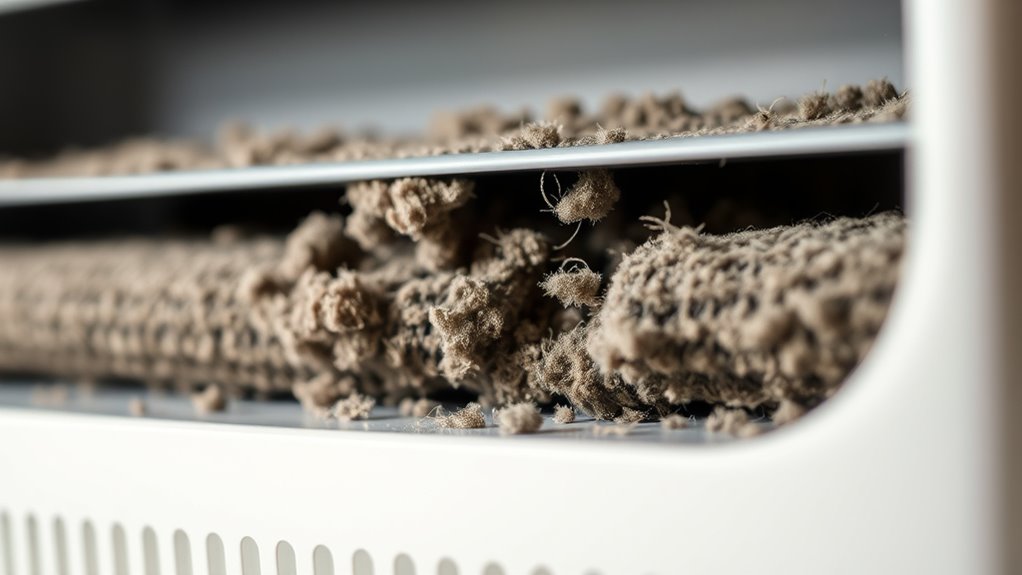
When odors persist despite replacing your filter, it may be time to contemplate other factors affecting air quality. One sign of this is increased dust and allergens in your space. If you notice more particles settling on surfaces or sneezing more often, your air purifier isn’t effectively managing allergen buildup. This often indicates an air quality decline due to a clogged or saturated filter. Additionally, using the right type of filter can significantly improve performance and air cleaning efficiency.
Consider these clues:
- A rise in dust settling on furniture and surfaces
- More frequent allergy or asthma symptoms
- Visible accumulation of particles near vents or on the filter
If these signs appear, your filter might need replacing sooner rather than later to prevent further allergen buildup and restore cleaner, healthier air.
Visible Dirt, Dust, or Debris on the Filter
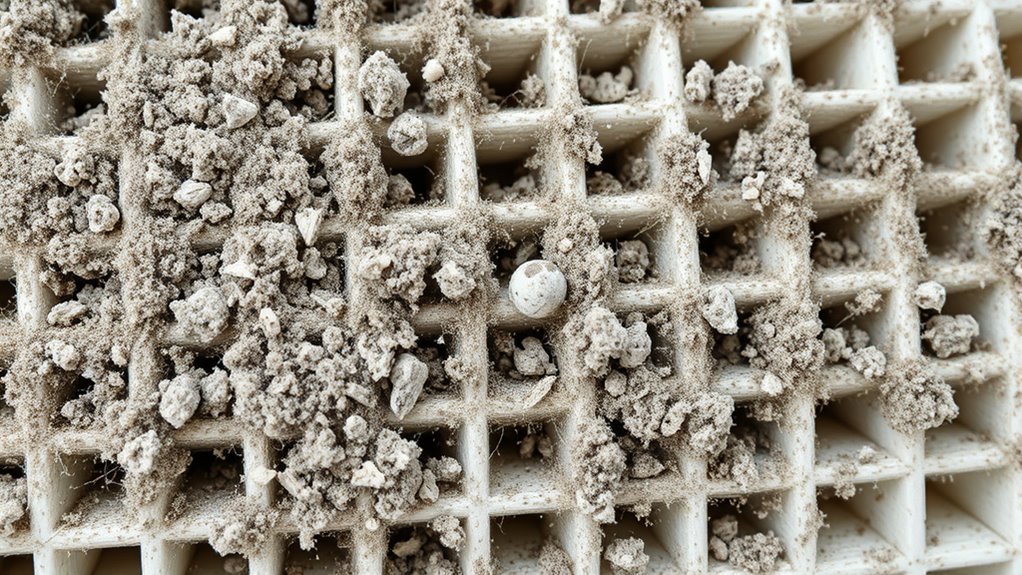
Noticing dirt, dust, or debris visibly accumulating on your air purifier’s filter is a clear sign it’s time for a replacement. When the filter shows discoloration, such as darkened or stained areas, it indicates it’s trapping a significant amount of pollutants and may no longer be effective. You might also observe filter sagging, which occurs when the filter material loses its shape and flexibility after prolonged use. These physical changes compromise airflow and filtration efficiency, reducing its ability to clean your air properly. If dirt and debris are plainly visible, it’s a strong sign that the filter is clogged or saturated, reducing its ability to clean your air properly. Replacing the filter guarantees your purifier continues to operate at peak performance and maintains healthy indoor air quality. Additionally, filter maintenance is crucial to ensure your device functions optimally over time.
Unusual Noises or Device Malfunctions
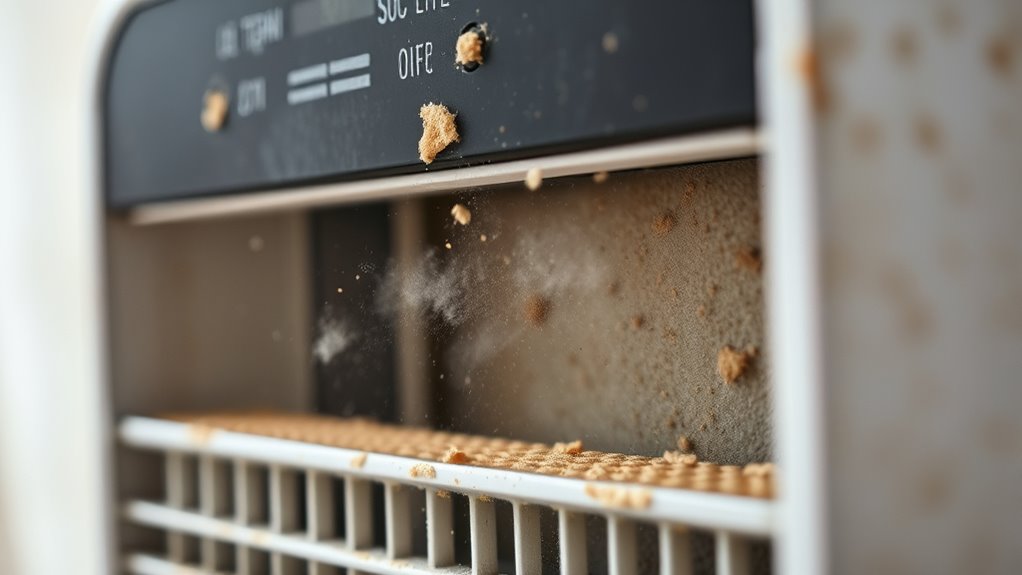
Unusual noises or device malfunctions often indicate that your air purifier’s filter needs replacing. If you notice increased noise levels or strange sounds, it’s a sign that the filter may be clogged or nearing the end of its lifespan. These sounds can include rattling, buzzing, or grinding noises, which often point to motor strain or debris buildup. To keep your purifier running smoothly, watch for:
- Sudden increases in noise levels during operation
- Motor or fan noises that don’t subside
- Malfunctions or intermittent shutdowns
These issues suggest the filter is no longer performing effectively, affecting airflow and noise levels. Replacing the filter can restore proper function and prevent further device malfunctions caused by a compromised filter lifespan. Additionally, being attentive to device malfunctions can help you detect issues early and maintain optimal air quality. Proper filter maintenance is essential to ensure your air purifier continues to operate efficiently and effectively, and replacing filters at the right intervals is a key part of air purifier upkeep. Regular inspections can also help identify early signs of wear that may lead to performance issues.
Frequently Asked Questions
How Often Should I Replace My Air Purifier Filter?
You should replace your air purifier filter based on its filter lifespan, which varies by model and usage. Generally, check the manufacturer’s recommendations—most filters last about 6 to 12 months. Regularly monitor your device’s indicator or your air quality; if you notice decreased efficiency or increased dust, it’s time for a change. Keeping your filter fresh guarantees ideal air quality and maintains your purifier’s performance effectively.
Can a Dirty Filter Affect My Air Purifier’s Energy Consumption?
A dirty filter can definitely impact your air purifier’s energy efficiency. When the filter’s clogged, your device has to work harder to circulate air, using more power and reducing overall filter performance. This strain not only increases energy consumption but also shortens the lifespan of your purifier. To keep it running smoothly and efficiently, replace or clean the filter regularly, ensuring peak filter performance and energy savings.
What Are the Best Practices for Maintaining My Filter’S Longevity?
To maintain your filter’s longevity, you should follow regular filter cleaning and stick to a consistent replacement schedule. Check your air purifier’s instructions for recommended cleaning intervals, typically every few months, and replace the filter as needed. Keeping it clean prevents buildup and guarantees peak performance. Remember, timely replacements help avoid strain on your device and improve air quality, so stay proactive with your maintenance routine.
Are There Different Signs for HEPA Versus Carbon Filters Needing Replacement?
You might notice different signs indicating your HEPA versus carbon filters need replacing. For HEPA filters, filter discoloration and reduced airflow are common signs of clogging. With carbon filters, you’ll often detect unusual odors lingering despite running the purifier. Both filters will eventually show these signs as they become less effective, so pay attention to discoloration and odors to determine when it’s time to replace them.
How Do I Know if My Filter Has Been Installed Correctly?
You might worry about installation issues, but correctly installed filters usually fit snugly and align properly. To guarantee you’ve installed it right, check that the filter is seated securely without gaps or misalignment. Many air purifiers have a click or latch that indicates proper placement. If it feels loose or doesn’t fit as intended, recheck the instructions. Proper installation ensures ideal performance and prevents filter misalignment.
Conclusion
Just like a trusted friend who’s been with you through thick and thin, your air purifier relies on a clean filter to keep your space fresh. When you notice signs like weak airflow or lingering odors, it’s time to replace that filter. Don’t let your device become a ghost of its former self—think of it as tending to a loyal companion, ensuring it continues to serve you well and breathe new life into your environment.
